Found a total of 10000 related content


The Ethereum Foundation officially announced a detailed explanation of organizational structure adjustment! V Shen continues to serve as technical core consultant
Article Introduction:The Ethereum Foundation (EF) officially announced the adjustment of its organizational structure on April 28, establishing a management system of "dual executive directors" and "president coordination", and at the same time disclosed the division of responsibilities of board members and management. Although co-founder Vitalik Buterin did not hold an administrative position, he continued as a technical leader. The new dual executive director leader emphasized the importance of strategy and execution, EF said that the two new "Co-Executive Directors" will lead strategic planning and daily operations and work closely with other management team members. Wang Xiaowei (Hsiao-WeiWang): also serves as Dong
2025-05-15
comment 0
590
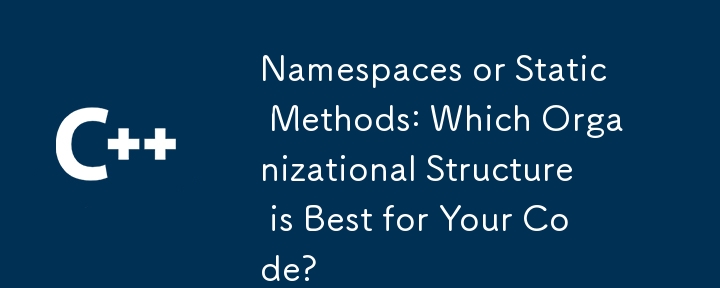

How to Organize a Large React Application and Make It Scale
Article Introduction:This article explores effective strategies for building and structuring large-scale React applications. React's flexibility regarding file structure often leads to organizational challenges. This guide offers a practical approach, acknowledging that
2025-02-10
comment 0
1102

How do I use recursive CTEs in SQL to query hierarchical data?
Article Introduction:This article explains SQL's Recursive Common Table Expressions (CTEs) for querying hierarchical data. It details their structure, using an organizational chart example, and addresses common pitfalls like infinite recursion and incorrect joins. Opti
2025-03-11
comment 0
990
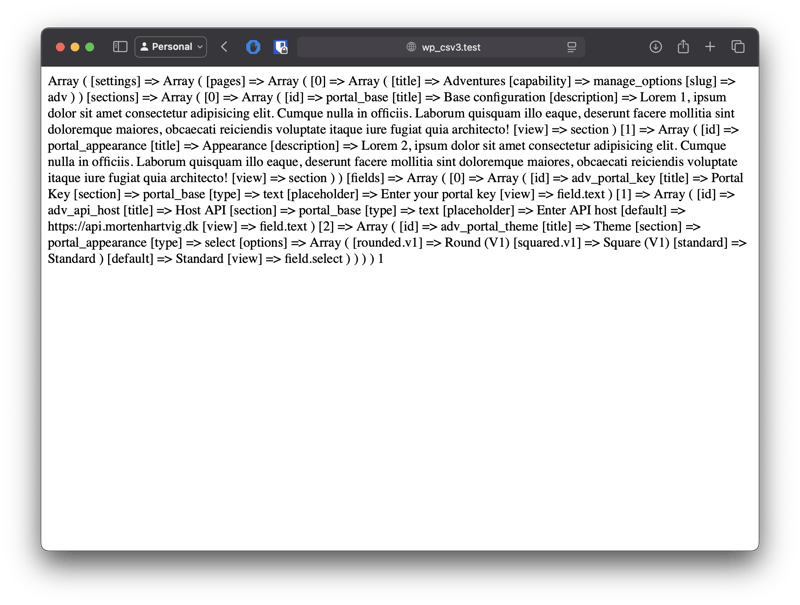
Creating WordPress plugin options based on a JSON structure
Article Introduction:The other day I was wondering how I could let WordPress plugin options be controlled by a JSON file, allowing one to more easily add additional settings in the future without having to adjust the code itself.
This article provides an example of an e
2024-12-11
comment 0
574

What is the basic structure of an HTML document
Article Introduction:A standard HTML document structure consists of several basic tags, mainly including: 1. Declaring the document type; 2. Root elements, including and; 3. Containing page meta information such as title, character set, viewport settings, styles and script references; 4. Place user-visible content, commonly used semantic tags such as, , , and organizational structure; 5. Pay attention to details such as correctly closing tags, using double quotes at attributes, and avoiding outdated tags.
2025-07-06
comment 0
900

Vue and Element-UI cascaded drop-down box data binding
Article Introduction:The cascaded selection box data binding of Element-UI adopts a tree structure and supports nesting. Pay attention to the following common errors: data structure mismatch, asynchronous loading of data is not completed, array modification is directly modified, and value is not unique. The correct way to update data is to use the API provided by Vue, such as this.$set or Vue.set. For large data, virtual scrolling or lazy loading can be used to optimize performance, while paying attention to code readability, maintainability, and organizational structure.
2025-04-07
comment 0
808

How do I use the element to represent a section of navigation links?
Article Introduction:The key to using elements to represent navigation link areas is semantics and clear structure, usually in conjunction with organizational links. 1. The basic structure is to put the parallel links in and wrap them inside, which is friendly to auxiliary tools and is conducive to style control and SEO; 2. Commonly used in or, for placing main navigation or footer link collections; 3. A page can contain multiple areas, such as main menu, sidebar or footer independent navigation.
2025-06-24
comment 0
758

What are the essential HTML elements for structuring a webpage?
Article Introduction:The web page structure needs to be supported by core HTML elements. 1. The overall structure of the page is composed of , , which is the root element, which stores meta information and displays the content; 2. The content organization relies on title (-), paragraph () and block tags (such as ,) to improve organizational structure and SEO; 3. Navigation is implemented through and implemented, commonly used organizations are linked and supplemented with aria-current attribute to enhance accessibility; 4. Form interaction involves , , and , to ensure the complete user input and submission functions. Proper use of these elements can improve page clarity, maintenance and search engine optimization.
2025-07-03
comment 0
790

What are metaclasses in Python?
Article Introduction:Python metaclasses customize class creation, allowing modifications to structure and behavior. They're used for adding methods, enforcing patterns like Singleton, and in practical scenarios like ORM frameworks and plugin systems.
2025-03-19
comment 0
756
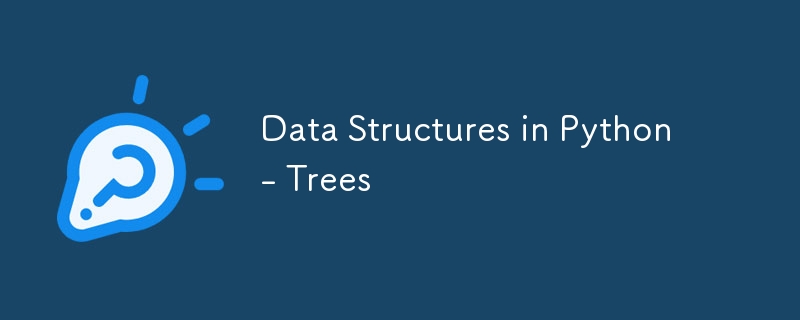
Data Structures in Python - Trees
Article Introduction:A tree data structure in Python is a non-linear data structure in which elements (called nodes) are connected by edges, with only one path between any two nodes.
Tree data structure in Python
Like all programming languages, a tree in Python is a hierarchical data structure with each node connected by edges. A tree consists of multiple nodes with a unique root node as the starting point. Trees are often used to represent hierarchical organizations, such as organizational charts or file systems.
The topmost node of the tree is called the root node, and the nodes below it are called child nodes. Each node can have multiple child nodes, and these child nodes can also have their own child nodes, forming a recursive structure.
Basic terminology for trees
Root node: The top node of the tree.
2025-01-19
comment 0
740

Speed up Development Using the WordPress Plugin Boilerplate
Article Introduction:Getting Started with WordPress Plugin Development: Using WordPress Plugin Boiler
WordPress plug-in development has a low learning curve and there is no only way to build plug-ins. Plugins can be as simple as Hello Dolly, just a single file; they can also be built in a very complex way based on various needs and functions. The WordPress plugin boilerplate is designed to provide a standardized, high-quality foundation that helps you build your next great plugin. In the first part of this series, we will explore the boilerplate in depth, including the structure of files and folders, as well as the code organization of the boilerplate.
Key Points
WordPress plugin boilerplate for building WordPress plugin
2025-02-17
comment 0
1081

Create WordPress Plugins With OOP Techniques
Article Introduction:This tutorial demonstrates building a WordPress plugin using object-oriented programming (OOP) principles, leveraging the Dribbble API. Let's refine the text for clarity and conciseness while preserving the original meaning and structure.
Object-Ori
2025-03-06
comment 0
1139

What are the challenges and solutions for maintaining CSS in large-scale applications?
Article Introduction:The key to maintaining CSS for large applications is organizational structure, naming specifications, and tool assistance. First, adopt component management, split styles and implement local scopes to avoid conflicts; second, unify naming specifications such as BEM, SMACSS or namespace prefixes to improve maintainability; third, use PostCSS, stylelint and other tools to achieve automated processing and code quality control. Although these methods are not complicated, they require teamwork and continuous maintenance to be effectively implemented.
2025-06-14
comment 0
525
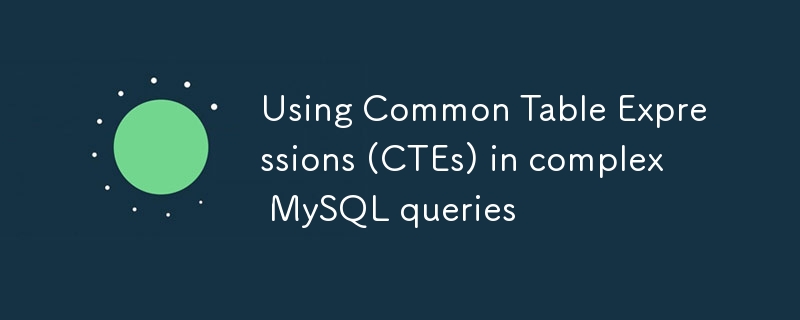
Using Common Table Expressions (CTEs) in complex MySQL queries
Article Introduction:CTE (CommonTableExpression) is a temporary result set used to simplify complex MySQL queries. It is defined by a WITH clause and exists only during the execution of a single query. It is often used to improve readability, handle recursive queries, and reuse logic. 1. The basic structure of CTE is: WITHcte_nameAS (query definition), followed by the main query; 2. Suitable for multi-layer nesting, duplicate subqueries or scenes requiring modular logic; 3. Support recursive queries, suitable for processing hierarchical data, such as organizational structure, whose structure contains basic query and recursive parts, and uses UNIONALL connection; 4. Pay attention to avoid infinite loops and is limited by the depth of recursive MySQL; 5. Although it is not as good as index optimization JOI
2025-07-02
comment 0
686
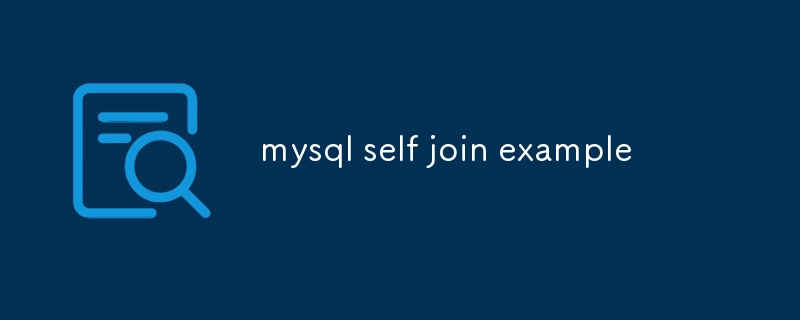
mysql self join example
Article Introduction:SelfJoin is a technology in MySQL that connects the same table to itself through alias. It is often used to process hierarchical or parent-child relationship data. For example, in the employees table, use LEFTJOIN to associate employees with their boss information: SELECTe.nameASemployee_name,m.nameASmanager_nameFROMemployeeseLEFTJOINemployeeesmONe.manager_id=m.id; this query can obtain the name of each employee and his direct boss, which is suitable for organizational structure, recursive data and other scenarios. Pay attention to using alias, avoid circular references and optimize performance.
2025-07-09
comment 0
734

Understanding ASTs by Building Your Own Babel Plugin
Article Introduction:Add default unchanged data for JavaScript using the Babel plugin
This article discusses how to write a Babel plugin to add immutable data to JavaScript by default. The article explains the concept of abstract syntax tree (AST) and its role in the Babel plug-in in depth, and demonstrates how to build a way to convert normal objects and array literals into persistent data structures in Mori library through step-by-step code examples. Babel plugin.
Core points:
The Babel plugin converts JavaScript code by operating an abstract syntax tree (AST), allowing developers to add features such as immutable data structures to JavaScript.
AST for understanding the structure and language of code
2025-02-18
comment 0
605

















